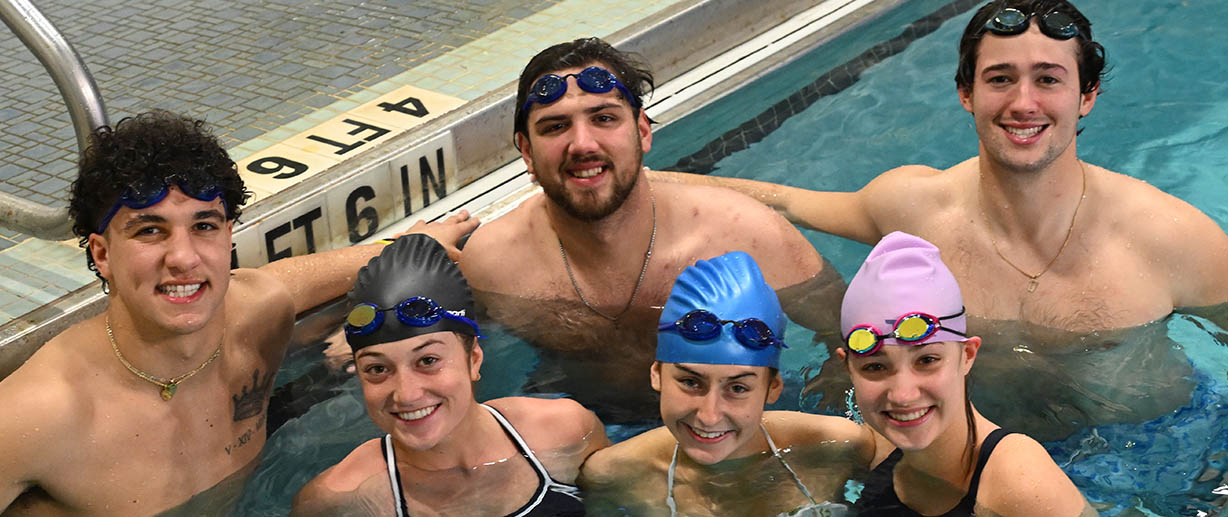Charles Beltz ’25 wasn’t thinking of himself when he decided to take the plunge during Interim.
“I took this course because I might have kids one day and I want to be able to save them if they have a near-drowning experience,” says Beltz, a biology major from Inman, South Carolina. “I swam in the deep end for the first time. I could barely float when I started.”
The Learn to Swim course, guided by Drs. Kim Rostan and Grace Schwartz, aims to teach students basic water safety and swimming skills.
Students also are learning about the history and cultural significance of the favorite recreational pastime. They’re also studying the societal barriers that contribute to an alarming rate of people who are unable to swim the length of a pool, a statistic that affects more than one-third of adults in the U.S., according to the USA Swimming Foundation.
“Pools used to be segregated based on gender and race,” says Schwartz, assistant professor of chemistry. “Once pools were required to integrate, a lot of them just shut down in response. We can still see the effect today with limited access to pools creating barriers to learning this life-saving skill.”
The course includes three days per week of pool instruction at Converse University and two days of classroom work at Wofford. Twenty students signed up for the course for various reasons—from conquering a fear of water to improving skills, confidence and mental health.
Devery Cagle ’26, an undeclared major from Greer, South Carolina, and a kicker on the football team, found an unexpected benefit.
“I really enjoy being in the water, and swimming is great for recovery after doing lifts during football practices,” Cagle says.
Rostan, associate professor of English, says it’s never too late for anyone to learn how to swim.
“Why wouldn’t we educate students in schools about swimming,” she says. “Humans are secondary swimmers. We used to be more built for water and now we’re not. But we can still learn to adapt to it.”
